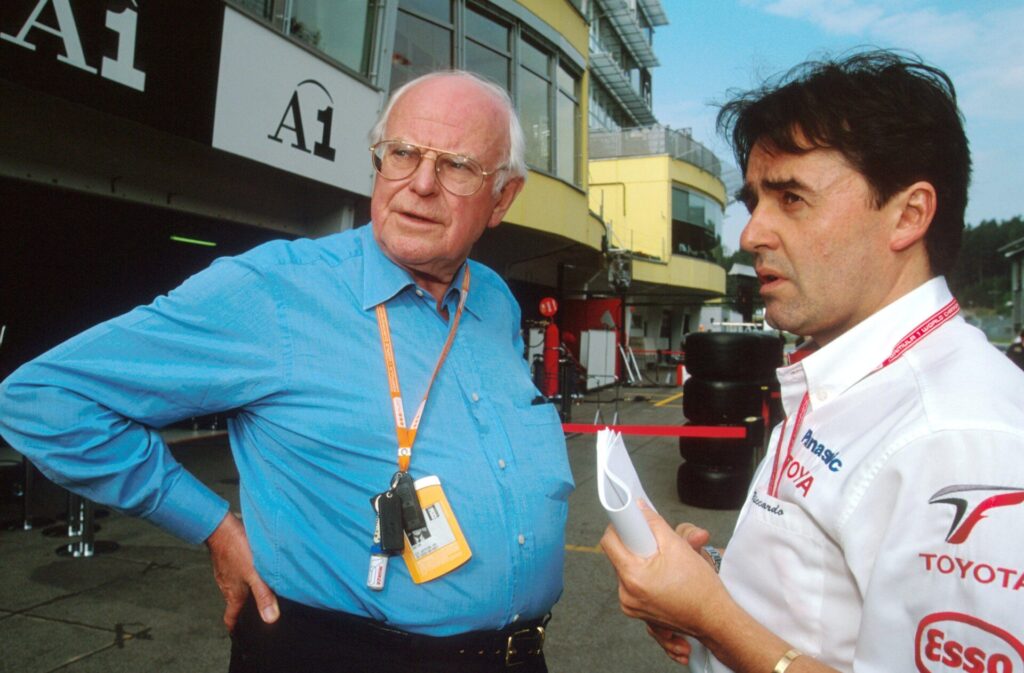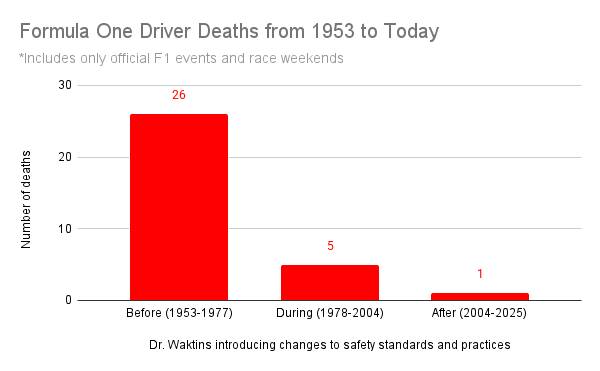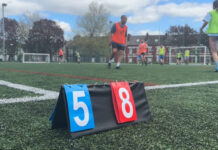Over the past 75 years, few can doubt the UK’s influence on Formula One.
Britain is home to many of the sport’s most successful teams, engineers, and drivers.
Motorsport Valley and the surrounding area in the south Midlands accounts for most of the influence.
However, Merseyside also plays a role in shaping the sport.
This three-part series will highlight the people and tracks that have contributed to the fabric of Formula One from Merseyside.
Dr Sid ‘Prof’ Watkins
Dr Sid Watkins, a neurosurgeon from Liverpool, revolutionised safety in Formula One.
His insistence on top medical standards, rapid response protocols, and on-site care at circuits saved countless lives and transformed the safety culture of the sport.

Born in Liverpool in 1928, Watkins graduated as a Doctor of Medicine from the University of Liverpool in 1956.
He went on to specialize in Neurosurgery at the Radcliffe Infirmary in 1958.
Throughout the 1960s and 1970s, Dr Watkins volunteered and worked at numerous motorsport events and tracks.
In 1978, his career took a pivotal turn when Bernie Ecclestone offered him a full-time role within the sport.
Putting Safety First
Ecclestone recognised Watkins’ unique expertise and passion, appointing him as the FIA Formula One Safety and Medical Delegate.
This partnership would prove to be one of the most influential in the history of Formula One safety.
Dr Nick Carleton-Bland, a consultant neurosurgeon at the Walton Centre and honorary Senior Lecturer at the University of Liverpool, hailed the respect Dr Waktins always had in Formula One.
The consultant neurosurgeon said: “He was always known as the Prof.
“He went from the US to the UK as a professor of neurosurgery.
“People respect someone who carries the title of professor, so he instantly had the respect of the drivers.
“He had the ability to instigate [safety] changes, to say no, that things weren’t acceptable, to see the racers in a more of a 3D way, as people with families.
“He had that force of personality and support from Bernie Ecclestone to really change the attitudes [surrounding safety].”
Dr Waktins was not only respected as a doctor by the drivers, but a confidant and friend as well.
Dr Carleton-Bland added: “He tried to and did form friendships at a very close and personal level with the drivers.
“He wanted to, as a doctor, not see them as objects but as people.
“That mindset made him want to protect his people and do everything he could for their safety.”
Preventative and Secondary Care
Over his 26 years as the safety and medical delegate, Dr Watkins used his position to implement safety measures and completely change trackside care.
Some of his changes at tracks included better safety equipment, an anaesthetist, a medical car, and a medical helicopter on site.
Dr Carleton-Bland said: “This idea of continuing improvement and trying to prophylactically protect the drivers is one of the big legacies that he brought in for racing.
“Not only did he bring in the preventative measures, but also secondary measures you do when someone’s had an injury.
“Being trackside allowed for very quick airway management and trauma management to take place.
“There’s not a huge amount you can do roadside for these very serious injuries, but having a senior specialist there would optimize any sort of emergency management.”
Dr Watkins is credited with helping save the lives of many drivers, including Gerhard Berger, Rubens Barrichello, Érik Comas, Martin Donnelly, Mika Häkkinen, and Karl Wendlinger.

He was also the doctor who tended to Aryton Senna after his crash in the 1994 San Marino Grand Prix and realised the seriousness of Senna’s head injury.
Senna was the last driver to die during Dr Watkins’ time as safety and medical delegate.
Dr Watkins’ Legacy
Dr Watkins retired from being the safety and medical delegate in 2004.
He continued as President of the FIA Institute for Motor Sport Safety until 2011.
He passed away in 2012 at the age of 84.
Dr Carleton-Bland said: “He was an incredible character.
“I don’t know how many people who grew up in Liverpool would ascend to becoming a professor of neurosurgery and having an influence on one of the most international and visible sports out there.
“What he achieved was really phenomenal. He gives this region, along with the Beatles and various football clubs, a lot of pride.”
He is memorialised in Merseyside through a building with his name at the Walton Centre NHS Foundation Trust.

Dr Watkins’ time as safety and medical delegate made him one of the most influential individuals in Formula One.
His efforts were instrumental in shifting the culture from reactive to proactive safety.















